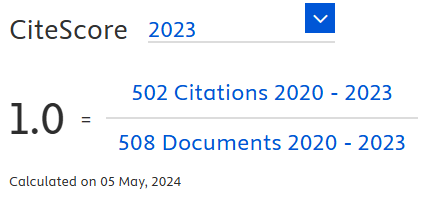Computational and pharmacokinetic evaluation of Distichochlamys citrea compounds for cancer treatment
DOI:
https://doi.org/10.18006/2025.13(2).137.150Keywords:
Apoptosis, bcl-xl protein, Black ginger, Cancer, Distichochlamys citreaAbstract
The apoptosis pathway plays a crucial role in regulating cell survival and death. This regulatory mechanism involves two main groups of proteins: anti-apoptotic and pro-apoptotic members of the Bcl-2 family. An imbalance that favors anti-apoptotic proteins, particularly the overexpression of Bcl-xL, is strongly associated with cancer progression across various tumor types. As a result, targeted cancer therapies focusing on Bcl-xL have been the subject of intense research in recent decades. Studies exploring natural compounds from medicinal plants present a promising complementary approach to cancer treatment alongside traditional anticancer drugs. This study examined compounds identified in Distichochlamys citrea, an endemic Vietnamese plant known for its anticancer properties. We employed molecular docking and molecular dynamics simulations to identify compounds from D. citrea with a strong binding affinity toward the Bcl-xL protein. Findings of the present study revealed that two molecules, i.e., Platyphyllone and 5-O-caffeoylquinic acid, bind stably and tightly to the hydrophobic groove of Bcl-xL, suggesting potential inhibitory effects. In-silico analyses of their pharmacokinetic and pharmacodynamic properties indicate that these molecules possess anticancer, antimetastatic, anti-mitotic, and apoptosis-inducing characteristics. Furthermore, both compounds adhere well to Lipinski's rule and exhibit desirable drug-like properties, making them potential candidates for high-dose oral administration without toxicity. In addition to being present in D. citrea, Platyphyllone and 5-O-caffeoylquinic acid are also found in many commonly consumed plants. These findings contribute to the scientific basis for further investigation into the molecular structure and bioactivity of Platyphyllone and 5-O-caffeoylquinic acid as potential cancer treatments.
References
Adasme, M. F., Linnemann, K. L., Bolz, S. N., Kaiser, F., Salentin, S., Haupt, V J., et al. (2021). PLIP 2021: expanding the scope of the protein–ligand interaction profiler to DNA and RNA. Nucleic Acids Research, 49(W1), W530-W534. DOI: https://doi.org/10.1093/nar/gkab294
Alhmoud, J. F., Woolley, J. F., Al Moustafa, A. E., & Malki, M. I. (2020). DNA Damage/Repair Management in Cancers. Cancers (Basel), 12(4), 1050. DOI: https://doi.org/10.3390/cancers12041050
Banerjee, P., Kemmler, E., Dunkel, M., & Preissner, R. (2024). ProTox 3.0: a webserver for the prediction of toxicity of chemicals. Nucleic Acids Research, 52(W1), W513-W520. DOI: https://doi.org/10.1093/nar/gkae303
Barbosa, G. B., Jayasinghe, N. S., Natera, S. H. A., Inutan, E. D., Peteros, N. P., & Roessner, U. (2017). From common to rare Zingiberaceae plants - A metabolomics study using GC-MS. Phytochemistry, 140, 141-150. DOI: https://doi.org/10.1016/j.phytochem.2017.05.002
Billen, L. P., Kokoski, C. L., Lovell, J. F., Leber, B., & Andrews, D. W. (2008). Bcl-XL inhibits membrane permeabilization by competing with Bax. PLOS Biology, 6(6), e147. DOI: https://doi.org/10.1371/journal.pbio.0060147
Boon, N. J., Oliveira, R. A., Körner, P.R., Kochavi, A., Mertens, S., Malka, Y., et al. (2024). DNA damage induces p53-independent apoptosis through ribosome stalling. Science, 384(6697), 785-792. DOI: https://doi.org/10.1126/science.adh7950
Borrás, C., Mas-Bargues, C., Román-Domínguez, A., Sanz-Ros, J., Gimeno-Mallench, L., Inglés, M., et al. (2020). BCL-xL, a Mitochondrial Protein Involved in Successful Aging: From C. elegans to Human Centenarians. International Journal of Molecular Sciences, 21(2), 418. DOI: https://doi.org/10.3390/ijms21020418
Boyenle, I. D., Ogunlana, A. T., Kehinde Oyedele, A.Q., Olokodana, B. K., Owolabi, N., Salahudeen, A., et al. (2023). Reinstating apoptosis using putative Bcl-xL natural product inhibitors: Molecular docking and ADMETox profiling investigations. Journal of Taibah University Medical Sciences, 18(3), 461-469. DOI: https://doi.org/10.1016/j.jtumed.2022.10.014
Bray, F., Laversanne, M., Sung, H., Ferlay, J., Siegel, R. L., Soerjomataram, I., et al. (2024). Global cancer statistics 2022: GLOBOCAN estimates of incidence and mortality worldwide for 36 cancers in 185 countries. CA: A Cancer Journal for Clinicians, 74(3), 229-263. DOI: https://doi.org/10.3322/caac.21834
Chan, E. W. C., Lim, Y. Y., Ling, S. K., Tan, S. P., Lim, K. K., & Khoo, M. G. H. (2009). Caffeoylquinic acids from leaves of Etlingera species (Zingiberaceae). LWT - Food Science and Technology, 42(5), 1026-1030. DOI: https://doi.org/10.1016/j.lwt.2009.01.003
Chaudhary, T., Chahar, A., Sharma, J. K., Kaur, K., & Dang, A. (2015). Phytomedicine in the Treatment of Cancer: A Health Technology Assessment. Journal of Clinical and Diagnostic Research, 9(12), Xc04-xc09. DOI: https://doi.org/10.7860/JCDR/2015/15701.6913
Daina, A., Michielin, O., & Zoete, V. (2017). SwissADME: a free web tool to evaluate pharmacokinetics, drug-likeness and medicinal chemistry friendliness of small molecules. Scientific Reports, 7(1), 42717. DOI: https://doi.org/10.1038/srep42717
Du, X., Zhang, M., Wang, S., Li, J., Zhang, J., & Liu, D. (2024). Ethnopharmacology, chemical composition and functions of Cymbopogon citratus. Chinese Herbal Medicines, 16(3), 358-374. DOI: https://doi.org/10.1016/j.chmed.2023.07.002
Filimonov, D. A., Lagunin, A. A., Gloriozova, T. A., Rudik, A. V., Druzhilovskii, D. S., Pogodin, P. V., et al. (2014). Prediction of the Biological Activity Spectra of Organic Compounds Using the Pass Online Web Resource. Chemistry of Heterocyclic Compounds, 50(3), 444-457. DOI: https://doi.org/10.1007/s10593-014-1496-1
Fuentes, E., & Palomo, I. (2014). Mechanisms of endothelial cell protection by hydroxycinnamic acids. Vascular Pharmacology, 63(3), 155-161. DOI: https://doi.org/10.1016/j.vph.2014.10.006
Garcia-Oliveira, P., Otero, P., Pereira, A. G., Chamorro, F., Carpena, M., Echave, J., et al. (2021). Status and Challenges of Plant-Anticancer Compounds in Cancer Treatment. Pharmaceuticals (Basel, Switzerland), 14(2), 157. DOI: https://doi.org/10.3390/ph14020157
Jahagirdar, S., Praveen Kumar, H., Bhat, S. S., Poddar, A., Chattaraj, P. K., Ahmad, S. F., et al. (2024). In silico evaluations of phytochemicals from Withania somnifera exhibiting anticancer activity against NAD[P]H-quinone oxidoreductase. Human & Experimental Toxicology, 43, 9603271241291399. DOI: https://doi.org/10.1177/09603271241291399
Kaloni, D., Diepstraten, S. T., Strasser, A., & Kelly, G. L. (2023). BCL-2 protein family: attractive targets for cancer therapy. Apoptosis, 28(1), 20-38. DOI: https://doi.org/10.1007/s10495-022-01780-7
Katta, B., Vijayakumar, C., Dutta, S., Dubashi, B., & Nelamangala Ramakrishnaiah, V. P. (2023). The Incidence and Severity of Patient-Reported Side Effects of Chemotherapy in Routine Clinical Care: A Prospective Observational Study. Cureus, 15(4), e38301. DOI: https://doi.org/10.7759/cureus.38301
Kour, G., Haq, S. A., Bajaj, B. K., Gupta, P. N., & Ahmed, Z. (2021). Phytochemical add-on therapy to DMARDs therapy in rheumatoid arthritis: In vitro and in vivo bases, clinical evidence and future trends. Pharmacological Research, 169, 105618. DOI: https://doi.org/10.1016/j.phrs.2021.105618
Leitl, K. D., Sperl, L. E., & Hagn, F. (2024). Preferred inhibition of pro-apoptotic Bak by BclxL via a two-step mechanism. Cell Reports, 43(8), 114526. DOI: https://doi.org/10.1016/j.celrep.2024.114526
Li, M., Wang, D., He, J., Chen, L., & Li, H. (2020). Bcl-XL: A multifunctional anti-apoptotic protein. Pharmacological Research, 151, 104547. DOI: https://doi.org/10.1016/j.phrs.2019.104547
Liu, C., Ding, X., Li, G., Zhang, Y., Shao, Y., Liu, L., et al. (2023). Targeting Bcl-xL is a potential therapeutic strategy for extranodal NK/T cell lymphoma. iScience, 26(8), 107369. DOI: https://doi.org/10.1016/j.isci.2023.107369
Loo, L. S. W., Soetedjo, A. A. P., Lau, H. H., Ng, N. H. J., Ghosh, S., Nguyen, L., et al. (2020). BCL-xL/BCL2L1 is a critical anti-apoptotic protein that promotes the survival of differentiating pancreatic cells from human pluripotent stem cells. Cell Death & Disease, 11(5), 378. DOI: https://doi.org/10.1038/s41419-020-2589-7
Lopez, A., Reyna, D. E., Gitego, N., Kopp, F., Zhou, H., Miranda-Roman, M. A., et al. (2022). Co-targeting of BAX and BCL-XL proteins broadly overcomes resistance to apoptosis in cancer. Nature Communications, 13(1), 1199. DOI: https://doi.org/10.1038/s41467-022-28741-7
Moteki, H., Hibasami, H., Yamada, Y., Katsuzaki, H., Imai, K., & Komiya, T. (2002). Specific induction of apoptosis by 1,8-cineole in two human leukemia cell lines, but not a in human stomach cancer cell line. Oncology Reports, 9(4), 757-760. DOI: https://doi.org/10.3892/or.9.4.757
Neijenhuis, T., van Keulen, S. C., & Bonvin, A. M. J. J. (2022). Interface refinement of low- to medium-resolution Cryo-EM complexes using HADDOCK2.4. Structure, 30(4), 476-484. DOI: https://doi.org/10.1016/j.str.2022.02.001
Newman, D. J., & Cragg, G. M. (2016). Natural Products as Sources of New Drugs from 1981 to 2014. Journal of Natural Products, 79(3), 629-661. DOI: https://doi.org/10.1021/acs.jnatprod.5b01055
Newman, M. F. (1995). Distichochlamys, a new genus from Vietnam. Edinburgh Journal of Botany, 52(1), 65-69. DOI: https://doi.org/10.1017/S096042860000192X
Nguyen, T. V. A., Nguyen Thi, K.O., Nguyen, N. P., & Le, H. L. (2023). Antioxidant and antithrombotic activities of the Distichochlamys citrea leaves extract. Vietnam Journal of Biotechnology, 21(4), 681-697. DOI: https://doi.org/10.15625/1811-4989/18629
O'Boyle, N. M., Banck, M., James, C. A., Morley, C., Vandermeersch, T., & Hutchison, G. R. (2011). Open Babel: An open chemical toolbox. Journal of Cheminformatics, 3(1), 33. DOI: https://doi.org/10.1186/1758-2946-3-33
Pham, T. V., Hoang, H. N. T., Nguyen, H. T., Nguyen, H. M., Huynh, C. T., Vu, T. Y., et al. (2021). Anti-Inflammatory and Antimicrobial Activities of Compounds Isolated from Distichochlamys benenica. BioMed Research International, 2021, 6624347. DOI: https://doi.org/10.1155/2021/6624347
Piccolo, V., Maisto, M., Schiano, E., Iannuzzo, F., Keivani, N., Manuela Rigano, M., et al. (2024). Phytochemical investigation and antioxidant properties of unripe tomato cultivars (Solanum lycopersicum L.). Food Chemistry, 438, 137863. DOI: https://doi.org/10.1016/j.foodchem.2023.137863
Piha-Paul, S. A., Oh, D.Y., Ueno, M., Malka, D., Chung, H. C., Nagrial, A., et al. (2020). Efficacy and safety of pembrolizumab for the treatment of advanced biliary cancer: Results from the KEYNOTE-158 and KEYNOTE-028 studies. International Journal of Cancer, 147(8), 2190-2198. DOI: https://doi.org/10.1002/ijc.33013
Qian, S., Wei, Z., Yang, W., Huang, J., Yang, Y., & Wang, J. (2022). The role of BCL-2 family proteins in regulating apoptosis and cancer therapy. Frontiers in Oncology, 12, 985363. DOI: https://doi.org/10.3389/fonc.2022.985363
Rutz, A., Sorokina, M., Galgonek, J., Mietchen, D., Willighagen, E., Gaudry, A., et al. (2022). The LOTUS initiative for open knowledge management in natural products research. eLife, 11, e70780. DOI: https://doi.org/10.7554/eLife.70780
Ryu, M., Sung, C. K., Im, Y. J., & Chun, C. (2020). Activation of JNK and p38 in MCF-7 Cells and the In Vitro Anticancer Activity of Alnus hirsuta Extract. Molecules (Basel, Switzerland), 25(5), 1073. DOI: https://doi.org/10.3390/molecules25051073
Santos-Martins, D., Solis-Vasquez, L., Tillack, A. F., Sanner, M. F., Koch, A., & Forli, S. (2021). Accelerating AutoDock4 with GPUs and Gradient-Based Local Search. Journal of Chemical Theory and Computation, 17(2), 1060-1073. DOI: https://doi.org/10.1021/acs.jctc.0c01006
Saud, S., & Salamatullah, A. M. (2021). Relationship between the Chemical Composition and the Biological Functions of Coffee.Molecules (Basel, Switzerland), 26(24), 7634. DOI: https://doi.org/10.3390/molecules26247634
Sousa, S. F., Fernandes, P. A., & Ramos, M. J. (2006). Protein-ligand docking: current status and future challenges. Proteins, 65(1), 15-26. DOI: https://doi.org/10.1002/prot.21082
Stevens, M., & Oltean, S. (2019). Modulation of the Apoptosis Gene Bcl-x Function Through Alternative Splicing. Frontiers in Genetics, 10, 804. DOI: https://doi.org/10.3389/fgene.2019.00804
Van Chen, T., Cuong, T. D., Quy, P. T., Bui, T. Q., Van Tuan, L., Van Hue, N., et al. (2022). Antioxidant activity and α-glucosidase inhibitability of Distichochlamys citrea M.F. Newman rhizome fractionated extracts: in vitro and in silico screenings. Chemicke Zvesti, 76(9), 5655-5675. DOI: https://doi.org/10.1007/s11696-022-02273-2
Van Chen, T., Thong, C. L. T., Tran-Trung, H., Nhung, N. T. A., & Triet, N. T. (2023). Phytochemical Constituents Isolated From Distichochlamys citrea M.F. Newman Rhizomes and Their Antioxidant and α-glucosidase Inhibitory Activities. Natural Product Communications, 18(5), 1934578X231177878. DOI: https://doi.org/10.1177/1934578X231177878
Wang, H., Guo, M., Wei, H., & Chen, Y. (2023). Structural basis of the specificity and interaction mechanism of Bmf binding to pro-survival Bcl-2 family proteins. Computational and Structural Biotechnology Journal, 21, 3760-3767. DOI: https://doi.org/10.1016/j.csbj.2023.07.017
Wang, L., Doherty, G. A., Judd, A. S., Tao, Z.F., Hansen, T. M., Frey, R. R., et al. (2020). Discovery of A-1331852, a First-in-Class, Potent, and Orally-Bioavailable BCL-XL Inhibitor. ACS Medicinal Chemistry Letters, 11(10), 1829-1836. DOI: https://doi.org/10.1021/acsmedchemlett.9b00568
Waterhouse, A., Bertoni, M., Bienert, S., Studer, G., Tauriello, G., Gumienny, R., et al. (2018). SWISS-MODEL: homology modelling of protein structures and complexes. Nucleic Acids Research, 46(W1), W296-w303. DOI: https://doi.org/10.1093/nar/gky427
Zhang, L., Li, J., Tian, D., Sun, L., Wang, X., & Tian, M. (2020). Theranostic combinatorial drug-loaded coated cubosomes for enhanced targeting and efficacy against cancer cells. Cell Death &Disease, 11(1), 1. DOI: https://doi.org/10.1038/s41419-019-2182-0
Downloads
Published
How to Cite
License
Copyright (c) 2025 Journal of Experimental Biology and Agricultural Sciences

This work is licensed under a Creative Commons Attribution-NonCommercial 4.0 International License.












